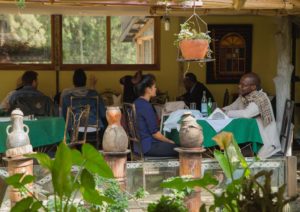They Love Lucy
February 17, 2017 - 2 minutes readMaybe they’ve never seen I Love Lucy in Ethiopia, but the feminine moniker has great significance nonetheless. Two meanings as a matter of fact.
Lucy No. 1 is the famed “missing link” discovered in Ethiopia’s Afar region in 1974 by an archeological team from the Cleveland Museum of Natural History in Ohio. Because she was a female hominin of the species

Lucy the hominin. What she might have looked like. Photo courtesy Cleveland Museum of Natural History.
Australopithecus afarensis, the diggers decided to call her Lucy — not after comedienne Lucille Ball but rather the Beatles song “Lucy in the Sky with Diamonds” which happened to be playing in the archeologist’s camp at the time of her discovery.
Estimated to have lived around 3.2 million years ago in prehistoric Africa, Lucy’s bones (or rather casts of the originals) are exhibited at the National Museum of Ethiopia in Addis Ababa. Her basement gallery houses the remains of many other hominin (ancient humans) discovered in Ethiopia.

Lucy the restaurant. What it actually looks like.
Lucy No. 2 is a popular restaurant by that name located right outside of the museum on King George VI Street. With a cool garden setting and open-plan kitchen where you can watch the chefs work their culinary magic, the eatery is a perfect place to dine before or after a museum visit.
While the house specialty is a popular tasting platter called beyaynetu that features many Ethiopian favorites, Lucy also serves, pizza, pasta and other Western dishes.
Jacaranda Tours in Addis Ababa can arrange visits to the museum that includes a glimpse of that 3.2-million-year-old lady as well as a feast at her namesake restaurant. Or for the more adventurous, a journey out to the Afar region that Lucy once roamed.
0 Comments